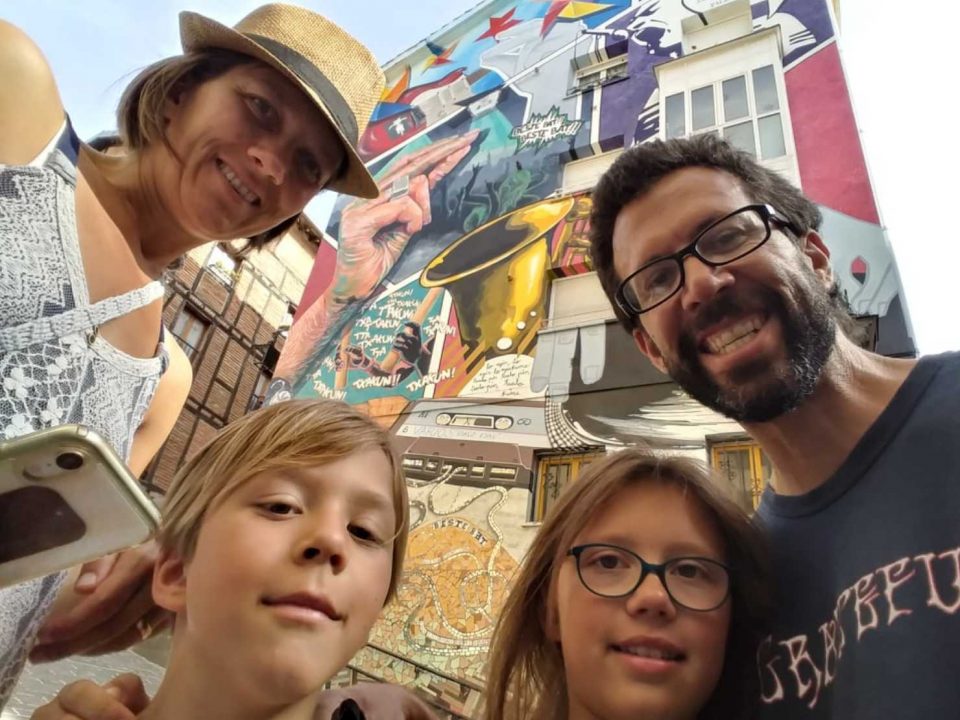
Spanish Immersion: Mi Queso es Su Queso, and other cultural conundrums
December 4, 2016
Peace in the Valley: 7 Essential Outings in La Cerdanya
December 12, 2016Our sortie into Spanish culture continued this week with all the fearlessness of a tenacious torero, and all the irony of a quarreling windmill. Funny that we should escape the reign of Donald the Imperious in order to resettle here in an old-world monarchy. But there are some key differences between the Spanish crown and the billionaire megalomaniac. The chief distinction being that the king is considered the father of his country, whereas the Donald is merely the father of his cabinet members.
Other differences in Spanish culture are more subtle, and require a little more time mingling in the community, to become aware of. The other day, for instance, I needed to change the oil in our VW camper, which has driven nearly 10,000 kilometers (6000 miles) since we bought it, and we’ve never known when the last oil change took place. Back in Cali, I used to go into Sears every 3 to 5,000 miles to change the oil and replace the filter on my old Toyota, for about $20 a visit. But here the recommend more like every 10-15,000 miles.
Apparently, they use a higher grade of motor oil here. One sign of this difference in quality is that the motor oil costs 12 euros ($13) a liter. Figure our VW engine holds 5.5 liters, and you need to spend more than $75 on oil alone. The oil filter is an additional $20. So we’re looking at close to $100 just for the materials, if we do the work ourselves. The one garage we called wanted to charge an incredible 250 euros for the whole job—yes, that’s more than 10x what I’d pay at Sears—so this week I’ll be changing the oil myself here in the hotel parking lot.
But you’re not here to read about automotive maintenance. You want to know about the night life, the party scene. Of course you do, and so do we. That’s why I went to the bar the other night, with my friend Frank, to attend the birthday party of a six-year-old, a friend and schoolmate of his son. And it was everything we could have hoped for.
They had a dance floor, a bounce house, and a long buffet table loaded with refreshments, for kids and parents alike. We had the option of M&Ms, potato chips, salami slices, cookies, pork rinds, fruit juices, bottled water, soda pop and beer. Harder drinks were available at the bar, in the other room.
I was delighted to hear, shortly before the party drew to a close, that there was also going to be a piñata. This fine tradition, which I’ve always assumed to be of Mexican origin, also has its place in Spanish fiestas. When the time came however, I was sorely disappointed. Rather than a quirky papier-mâché creature swinging from a tree branch (or from the ceiling, since the outdoor temp was about 3º Celsius), it was the birthday boy’s mother, holding up a glittery shopping bag and shaking it above the heads of the children until all the candy and cheap trinkets fell out on the floor.
This was no match for the great variety of piñatas we used to see regularly at the Guadalajara Meat Market or on weekends at 16th Street Park. Seahorses, donkeys, R2-D2s, Olaf snowmen, even the more traditional Cinderella that our daughter proudly decapitated at one of her friends’ birthday parties on Dana Street. There was no limit to the selection. Not to mention the more sophisticated adult piñatas, sometimes seen at grown-up birthday parties, containing airplane size bottles of Jim Beam, sample capsules of Prozac, and flavored condoms.
But when it comes to colorful birthday cakes, the Europeans really know how to over-do it. Wandering through the bakery section of a French supermarket, we recently came across what we thought was a plastic model race car, which our daughter was sure her little brother would just love. Imagine our surprise when we figured out that this was actually a ready-made cake, meant to be consumed by humans, mostly children. Reds and yellows and blues as brightly colored as a Pixar film festival.
And this is precisely what they were serving for dessert—after an hour or two of candies and sodas. Even as they removed the cobalt cakes from from their vacuum sealed packaging, I struggled to perceive whether these were durable toys or edible treats. The ingredient label surely reads something like a list of hazardous materials prohibited by the U.S Postal Service: E104, E238, E451, and so on. But the worst part happens the following day, when the kids all have Blue Number 2.
No problema, that’s just another incentive for us to ramp up our already vigorous production of probiotic kimchi and other gut-healing home remedies.
FURTHER READING: For more entertaining tales of cultural assimilation, check out some of the following articles.




